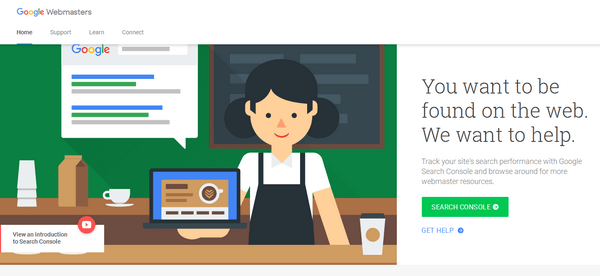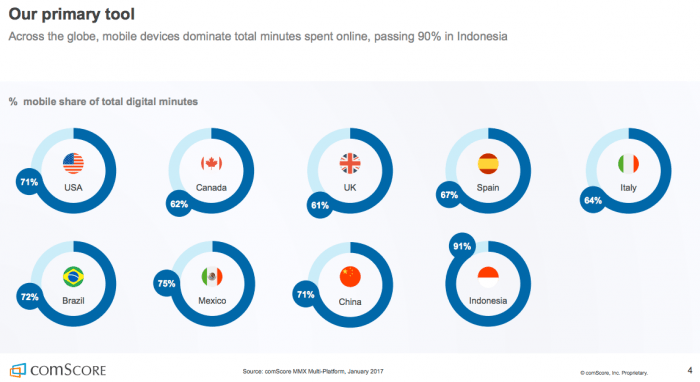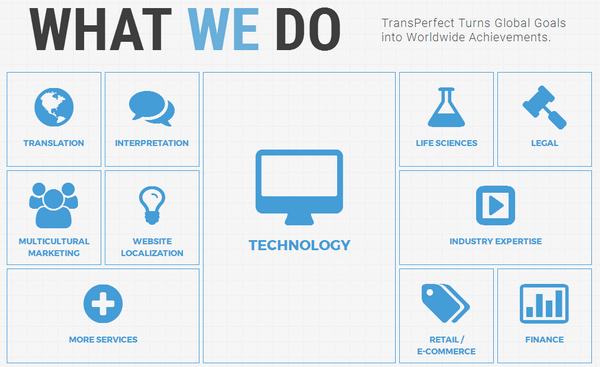Part 1. Google rankings for SMB: tools and checklists
My last year’s CPD included quite a few of courses and certifications in online and content marketing.
To make better use of how-tos learned, I decided to proceed with a series of online marketing and promotion guides. Are you seeking ideas to optimise your website and content for discovery and conversion? Follow the blog for actionable tips! To ensure they work, I will use them while updating and optimising my own sites. (Keen to see the results!) More links may be added later if I discover more useful tools.
The planned topics:
– Content-related best practices
– Social media tips and tricks
– Branding strategies
– Latest marketing trends to know about
– And this one, SEO as the core element to make your business readily found online
Websites and online content should help us get customers. But first, potential customers must become aware that we exist.
By SEO we mean all the methods you can use for better visibility of websites and content on search engine results pages.
The following steps will help you to position your website and/or brand better in organic (non-paid) results, draw in new clients, and get a chance to increase conversions.
step 1. KEEP UP WITH THE LATEST SEO TRENDS
For several years, Google has been focusing on understanding ‘natural’ queries brought by the increase of mobile and voice searches. The search engine has now improved significantly in conversational language processing.
The traditional view of ‘keywords’ has changed as the search became semantic. It now works with non-specific natural search terms in use and attempts to find the core concept they belong to.
That enables Google to understand the intent behind queries and provide more relevant search results to the user. To become a part of relevant search results, your website and SEO should fulfil the following basic tasks:
- Explain to Google and searchers what your company does
- Offer easy navigation to help visitors find what they need
- Answer visitors’ questions through rich content and social proof
At present, more than 200 Google factors influence your search positions. But the three top ranking factors are links, content & RankBrain, the algorithm for indexing online content.
The methods to achieve higher rankings include on-page optimisation (working with your content); off-page approaches (link-building, social media marketing), and—as usual—analytics and feedback.
Successful SEO practices are always tied to business goals and client-oriented. You need to analyse what your message is and whom it’s for. Get to know your potential customers, their needs and pressing issues. In that case even a lower traffic volume will be invaluable, especially for niche and technical products and services.
step 2. MAKE USE OF WEBSITE OPTIMISATION CHECKLIST
Always start with inner optimisation to create a solid foundation for future activities. Pay special attention to the following points:
1. Loading speed
The load speed of your webpage is increasingly becoming a differentiator for search engines.
Start with free Google Page Speed Checker. Your aim is a green check mark.
For better results, implement the recommendations offered by the service. A spoiler: you may well need a programmer to get a flawless version but some tips are easy and actionable. My results after some light optimisation are quite good. (92 for mobile and 96 for desktop instead of 33 and 38.)
- Always optimise your images. Use services like compressor.io or Photoshop > Save for Web
- Get rid of plugins for WordPress if they are not a must. The less, the better
- W3 Total Cache plugin is highly recommended (Not sure of settings? Try this resource or google another one)
More free speed test tools are available online.
2. 404 errors and identical content
For link checking, try free Xenu’s Link Sleuth or use Google Search Console.
The console is a part of Google Toolkit for Webmasters and a must have for everyone interested in search rankings.
If Google finds two identical pieces of content, whether on your own site or on another you’re do not even know of, it indexes only one of the pages. Be aware of sites stealing and republishing your content.
Copycats can outrank you even with the stolen content. If you have identified an offending website, take the appropriate action. Contact the website owner or use Google’s content removal form.
3. Responsive design
The share of mobile traffic continues to increase (see below). Moreover, Google has stated that responsive design is its preferred method of mobile optimisation. Non-responsive websites won’t rank high.
You can check adaptability using Google mobile friendly service or pull up your website on a smartphone. Are the fonts adapted? Does the content fit the screen? Is there space enough between text, graphics, and links?
If you plan to enjoy tonnes of mobile traffic, consider investigating Google AMP project. Early adopters report a serious increase in returning mobile search users.
4. Website structure
For providing the best possible user experience, you need an easily navigable, searchable site with relevant internal linking and related content.
SEO experts agree that to get the most traffic you should have dedicated pages for every service you offer, industries and sectors you work with, portfolio and/or blog. Other pages are business-dependent. For example, translators/interpreters could add a page for each of their working languages.
Internal linking helps Google crawl and index your site, provides your audience with further reading options and adds to online business visibility for specific keywords.
5. Content
No more on-purpose mistakes, strange phrases for strict matching or atrocious keyword stuffing. Luckily for us, Google search algorithms became more mature in recent years.
You’ll find signals for content quality in the Google Search Quality Ratings Guidelines. They pay special attention to the level of expertise, authoritativeness and trustworthiness. A satisfying amount of high-quality main content matters, too.
Stylistically correct and aimed at user needs
Search engines try to provide the most appropriate results to queries, so they look for relevancy.
Google’s Webmaster Academy course tells you how to “create valuable content.” Avoid broken links, wrong information, grammar or spelling mistakes, excessive ads.
Your SEO friends:
– Subheadings
– Bulleted lists
– Shorter sentences (14–16 words max)
– Shorter paragraphs to grasp the idea
– Structured content
– Thematic completeness
– Relevant keywords/phrases co-occurrence
– Graphics with keywords in ALT tags.
Leveraging ‘psychology tricks’
Optimise content titles for more clicks AND better search rating. Note: Your content should still be relevant to the headline or you risk a high bounce rate.
The biggest winners are striking headlines which include numbers and superlative words like “amazing” or “inspiring.”
Your SEO friends:
– Optimized headlines (emotions + promise + keyword)
– Calls for action where possible and/or necessary.
Adapted and unique
When localising content, look for cultural and/or social differences. Get rid of the content irrelevant to the local audience. Pay attention to local Latent Semantic Index (LSI) keywords instead: phrases similar to your main keywords. Google loves them. (See below.)
Your SEO friends:
– Natural word order
– Locally relevant content
– Content checking services
(Glvrd.ru for Russian texts; Hemingway editor for English content).
step 3. GET FAMILIAR WITH KEYWORDS
Accurate and relevant keywords within headlines and anchor text along with proper tagging are still among SEO best practices. 93% of online experiences begin with a search, and a search begins with words.
Research target keywords
Create a short list of keywords relevant to your area of expertise and use them often across your site and social media profiles.
In case you localise your website or social media content, consider researching keywords in your target languages as keyword translation does not suit your needs.
Google’s Keyword Planner is the easiest way to search for keywords. Tip: to access it you need an account in Google AdWords. (If that’s not an option you will find some other tools below.)
If you need to localise your keywords for the Russian-speaking audience, you may also try Yandex’s Keyword Statistics or Serpstat to find targeted keywords.
Expand to long-tail keywords and natural language
These are your cornerstones to fit the requirement of current search algorithms and user behaviour. Latest Google searching algorithms use latent semantic indexing (long tail keywords) to understand user search habits and give best content for their search queries.
Long tail keywords are keywords that contain 3 or more words. Why do we need them?
– Specific queries are easier to rank
– Long-tail keywords bring relevant visitors to the website
– They mean lower competition
– LSI offers low cost-per-click and increased conversion
Google’s Keyword Planner is pretty much useless for key phrase research be it blogging, SEO or content marketing. Free but powerful tools can offer synonyms which are searched more frequently or search prompts for phrases useful for you, or show keywords working for your competitors.
Ubersuggest. It adds every letter in the alphabet after the keyword to generated hundreds of long tail keyword suggestions.
AnswerThePublic. A one pager that can be used to understand what truly matters to your clients (remember to pick up a country).
Keywordtool.io. 750+ keyword suggestions for free. Considered one of best tool for long tail keywords.
LSI Graph. LSI keyword generator.
Feel free to use Google tools extensively. Use the search bar to type in a keyword and see what Google Auto Suggest gives you. Use Google Trends to search for popular phrases and figure out which variation of a keyword is best.
Understand the user intent behind target keywords
Natural language is taking over search queries. Where users would once type words they are now asking questions. Those questions essentially become long-tail keywords for your SEO strategy.
Plug your core keywords into Google and study the results for user intent. Use them strategically as you plan and craft content. Match your website and your content to the kinds of information that users need. If a brand wants to rank well for the term (aka keyword), they need to provide high-quality content defining the term and explaining their industry.
Aim for topical completeness as too generic texts have a much higher bounce rate with a negative effect on search engine positions. Longer (more than 1000 words) ‘how to’ guides, case studies, niche insights, expert comments, life hacks both attract and add value in the sales funnel. Having a FAQ page with all user intent questions could be a good thought.
The SEMrush Keyword Difficulty tool assesses which keywords are worth targeting or are too difficult to rank for. The tool provides a keyword difficulty index from 1-100 percent to show you how difficult it’ll be to beat your competitors with the specified search terms and phrases.
Optimise your content with keywords
Basic keyword optimisation principles:
– A keyword in the Title tag
– A keyword or a synonym in H1 tag
– H2 subheadings should be present
– Several long-tail keywords with synonyms
– Graphics is a must (photo, infographic)
– Internal links to similar content (with keywords) to improve user experience
– External links to authoritative high ranking sites
Searchers get results not only based on the exact word they typed but by what the search engine deems to be meaningfully related. Now a smaller site gains benefits that can make a huge difference to your SEO. Target keywords that the competitors are unwilling or unable to compete on.
step 4. MOVE TO OFF-SITE OPTIMISATION CHECKLIST
Authority has always been a component of Google’s search. To determine if your answer is any better Google looks at the number, and quality, of other websites that have placed links to your site – especially in the same industry or niche.
A free extension for Chrome web browser, the Moz Bar gives instant insights on different kinds of links and helps determine if a link is beneficial for your website or not. Track your backlinks and disallow the unwanted links to protect your site from Google Penalty.
Apparently, link building is the key to your off-site optimisation. Good content brings you natural backlinks adding to your search engine page position. Another obvious way to raise your site’s visibility through off-site SEO is social media marketing (SMM).
Be present on all relevant social channels (follow the white rabbit target audience). Note that faceless broadcasting does not add to your SEO. Make SMM a customer service channel and interact with people to generate interest and attract visitors to your website.
Relying on finding and verifying local data, Google My Business is a great tool for local SEO. A keyword in your business name means that you will rank higher.
Various tools are out there to find non-linked mentions of your brand. Analyse them and turn the most relevant mentions into backlinks.
Your SEO friends:
– Catalogues
– Local resources
– Online media
– Info partners
– Commenting
– Online social profiles.
CORNERSTONES TO MAKE YOUR BUSINESS FOUND ONLINE
Keyword optimised headings, helpful navigation, and value-added content appeal both to search engines and human visitors. Show how your service solves user’s problems and be clear with the next action to take.
- Write down your expertise and target customers
- Make sure there are no technical issues left (items 1-3 of website checklist)
- Create an optimised website structure based on keywords
- Develop your content policy (style, headlines, adaptation where needed)
- Create relevant and useful content
- Popularise your content and build links for authoritativeness and trustworthiness (off-page optimisation)
- Analyse KPIs (visitors, number of leads/conversions/closed sales, goals achievement, competitors, etc.)
- Do not stop: correct, improve, and fine-tune









